Look Good Naked
 I’m always amazed at some of the new clothing products available, such as Spanx that help you look far slimmer and fit when you’re dressed. While they are made of newer materials, the concept is the same as corsets and girdles, but less confining. Those undergarments may make your clothing fit better, but do you look good naked? Rather than spending money on clothing to conceal being out of shape or overweight, it’s better to take the time to workout and eat healthy, so you’ll feel confident and look fabulous at the beach.
I’m always amazed at some of the new clothing products available, such as Spanx that help you look far slimmer and fit when you’re dressed. While they are made of newer materials, the concept is the same as corsets and girdles, but less confining. Those undergarments may make your clothing fit better, but do you look good naked? Rather than spending money on clothing to conceal being out of shape or overweight, it’s better to take the time to workout and eat healthy, so you’ll feel confident and look fabulous at the beach.
You’ll get huge benefits from working out and eating healthy.
Working out regularly and eating healthy gives you the freedom to look fabulous at any time, any place. That’s a huge benefit. It can make you feel confident anywhere—even in the bedroom. Exercise and healthy eating gives you more energy, so you’ll get more done quicker. It helps you think faster, for those of you that sit in front of a computer as part of your job. You’ll have energy to spare to enjoy your free time and have fun with the family.
Looking good naked will boost your love life tremendously.
If you have a life partner, not only will he or she be more receptive to your new look, you’ll feel sexier and more confident. For those that don’t, this new look could be the confidence builder you need to start a relationship. For men, working out boosts testosterone levels, while women get improved circulation and that can improve sex organ functioning. Eating healthy doesn’t leave you feeling bloated, which is a real mood killer.
Not only will you get a great body and more energy, you’ll get confidence and more.
Studies show that people have an improved self-image just by starting a program of exercise. You can imagine how much better they feel about themselves when changes start to come. Not only will you improve your mood and confidence, you’ll think faster. Cutting out sugar can reduce inflammation to the brain and exercise can lower the risk of depression, even reversing it. It’s good for your spirit and mind.
- Exercise improves memory and cognitive functioning. It boosts circulation delivering oxygen and nutrient laden blood to all parts of the body, including the brain.
- Exercise improves your posture. Even if you initially don’t have all the confidence you need, you’ll look like you do with good posture. The more confident you look, the more confident you’ll become.
- Stress can play havoc with your mood and body. Exercise burns off the hormones of stress and replaces them with ones that make you feel more at ease and happy. Happy is sexy.
- While those undergarments can make you look thinner, they can’t make you look younger. Eating healthy and exercise can. Whether you’re naked or clothed, that’s a huge plus.


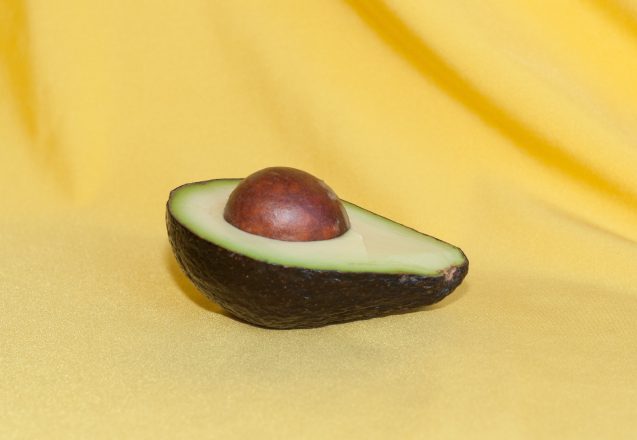
 I often tell clients in Houston, Tx that the more they know about getting and staying fit, the better chance they have of being fit. That’s why I love to do these blogs, to provide that information. Here are some fat loss facts that can help you in your effort to shed weight. You may already know some of them, but others might be contrary to what you heard or knew. Use this information to arm yourself on the road to fitness and weight loss.
I often tell clients in Houston, Tx that the more they know about getting and staying fit, the better chance they have of being fit. That’s why I love to do these blogs, to provide that information. Here are some fat loss facts that can help you in your effort to shed weight. You may already know some of them, but others might be contrary to what you heard or knew. Use this information to arm yourself on the road to fitness and weight loss.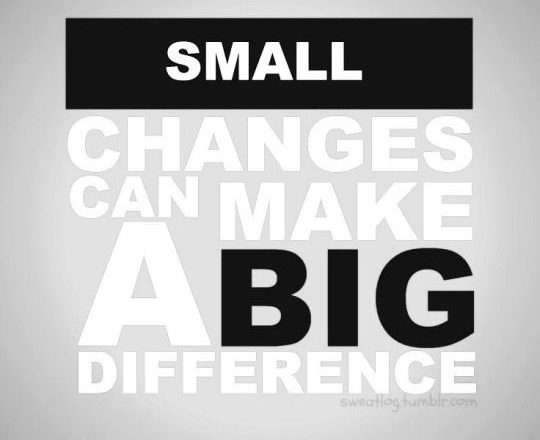
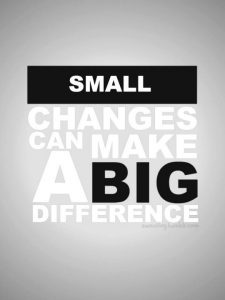 Don’t get overwhelmed by trying to do everything at once. It’s one of the major problems I see in the clients in Houston. Fitness can start with small changes and have just as much of an impact as jumping into a program that changes several aspects of your life. The concept of fitness is a broad category with each person requiring a different focus. For the twenty year old, being able to run ten miles might be his or her idea of being fit, but for the senior, it’s probably something totally different. That’s one reason working with a personal trainer is important, just as identifying areas of your life that need improvement. There’s no right or wrong approach. It’s all about what’s right for you and it can begin with small changes at first.
Don’t get overwhelmed by trying to do everything at once. It’s one of the major problems I see in the clients in Houston. Fitness can start with small changes and have just as much of an impact as jumping into a program that changes several aspects of your life. The concept of fitness is a broad category with each person requiring a different focus. For the twenty year old, being able to run ten miles might be his or her idea of being fit, but for the senior, it’s probably something totally different. That’s one reason working with a personal trainer is important, just as identifying areas of your life that need improvement. There’s no right or wrong approach. It’s all about what’s right for you and it can begin with small changes at first.
 If you’ve tried to lose weight before and failed, you know it’s extremely depressing. Now, you’ve added one more reason to the list of reasons why you’ll never be fit. Maybe you weren’t realistic or maybe, your goal wasn’t focused on specifics. You need both to successfully reach any goal, whether it’s fitness or not. Consider people that go to college to attain a degree. Most of them start with a specific program that suits their interest and understanding. They follow a program with specific classes necessary as the core. If you are a genius in science, but have no musical background, getting a degree in music isn’t realistic. Neither is getting that degree in two months. However, switching to a major based in science provides a realistic goal and each individual class is one step toward it, bringing you focus.
If you’ve tried to lose weight before and failed, you know it’s extremely depressing. Now, you’ve added one more reason to the list of reasons why you’ll never be fit. Maybe you weren’t realistic or maybe, your goal wasn’t focused on specifics. You need both to successfully reach any goal, whether it’s fitness or not. Consider people that go to college to attain a degree. Most of them start with a specific program that suits their interest and understanding. They follow a program with specific classes necessary as the core. If you are a genius in science, but have no musical background, getting a degree in music isn’t realistic. Neither is getting that degree in two months. However, switching to a major based in science provides a realistic goal and each individual class is one step toward it, bringing you focus.
 There’s a lot of discussion about whether you should workout on an empty stomach or eat a light meal or snack before you workout. One thing is certain, if you’re going to have a full meal that contains a high amount of protein, fat and carbohydrates, you’re better off eating it at least two to three hours before the workout. If eating at that time is not possible, as you get closer to the workout, make the meal lighter and simple carbs with some protein. Otherwise, you might find that you’ll have some stomach problems at the gym. Your stomach needs some of the blood for digestion, so both your workout and stomach suffer in the process.
There’s a lot of discussion about whether you should workout on an empty stomach or eat a light meal or snack before you workout. One thing is certain, if you’re going to have a full meal that contains a high amount of protein, fat and carbohydrates, you’re better off eating it at least two to three hours before the workout. If eating at that time is not possible, as you get closer to the workout, make the meal lighter and simple carbs with some protein. Otherwise, you might find that you’ll have some stomach problems at the gym. Your stomach needs some of the blood for digestion, so both your workout and stomach suffer in the process.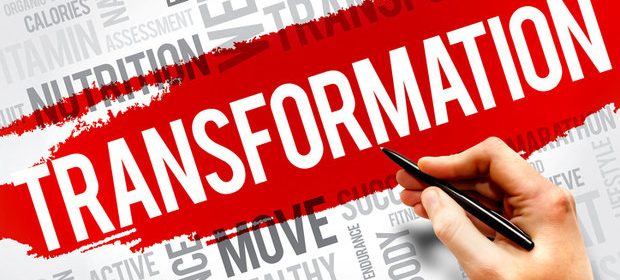
 Whether you live in Houston, TX or another part of the country, want to come to the gym or prefer to workout at home, you can transform your body with my help and the aid of modern technology. There’s no limit to where you can be when you use the magic of today’s technology and my helpful app. It will get you fit and swimsuit ready in no time. It’s created to help you reach your fitness goals no matter what they are.
Whether you live in Houston, TX or another part of the country, want to come to the gym or prefer to workout at home, you can transform your body with my help and the aid of modern technology. There’s no limit to where you can be when you use the magic of today’s technology and my helpful app. It will get you fit and swimsuit ready in no time. It’s created to help you reach your fitness goals no matter what they are.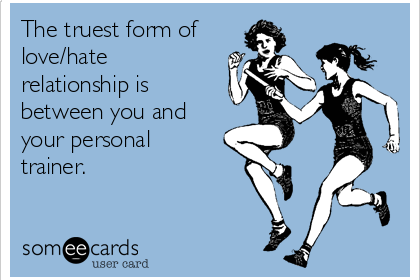
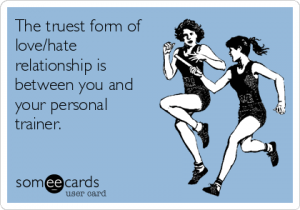 If you’re reluctant about working out when you’re sore, you may have reason to worry. Then again, you may actually need to workout and get through the discomfort. The immediate thought is to take a rest, but the key to whether workout or not is just how sore you are. If it’s extremely painful to move, not only do you need to set aside your workout, you need to seek medical attention. Unbearable pain is not part of the program and may indicate a serious injury that needs care.
If you’re reluctant about working out when you’re sore, you may have reason to worry. Then again, you may actually need to workout and get through the discomfort. The immediate thought is to take a rest, but the key to whether workout or not is just how sore you are. If it’s extremely painful to move, not only do you need to set aside your workout, you need to seek medical attention. Unbearable pain is not part of the program and may indicate a serious injury that needs care.
 In Houston, Tx, we focus on both healthy eating and exercise. We also pay attention on what you drink, because it affects your body as much as what you eat. Of course, I highly recommend water and preach constantly to avoid sugary drinks like soft drinks. One other drink I often promote is green tea. There are benefits of green tea for both weight loss and health benefits that everyone should consider when checking for the best beverage with their meals. Some studies show that drinking green tea helps decrease body fat. It can significantly reduce not only body fat percentage and body weight, but also belly fat and waist circumference.
In Houston, Tx, we focus on both healthy eating and exercise. We also pay attention on what you drink, because it affects your body as much as what you eat. Of course, I highly recommend water and preach constantly to avoid sugary drinks like soft drinks. One other drink I often promote is green tea. There are benefits of green tea for both weight loss and health benefits that everyone should consider when checking for the best beverage with their meals. Some studies show that drinking green tea helps decrease body fat. It can significantly reduce not only body fat percentage and body weight, but also belly fat and waist circumference.
 One healthy behavior most people fail to achieve is get adequate, consistent sleep. In fact, many people often think it’s almost noble to work too hard and burn the candle at both ends. The candles doesn’t last nearly as long that way and neither do people! Inadequate sleep is actually a health risk. The amount of sleep necessary varies from individual to individual, but it’s between 7 and 9 hour for adults with a rare few requiring only 6 hours sleep or at the other end of the spectrum, 10 hours.
One healthy behavior most people fail to achieve is get adequate, consistent sleep. In fact, many people often think it’s almost noble to work too hard and burn the candle at both ends. The candles doesn’t last nearly as long that way and neither do people! Inadequate sleep is actually a health risk. The amount of sleep necessary varies from individual to individual, but it’s between 7 and 9 hour for adults with a rare few requiring only 6 hours sleep or at the other end of the spectrum, 10 hours.
 Eating healthier and getting plenty of exercise is the starting point for having a healthier family and a healthier you. However, if you want to cover all bases, you need to create a healthy home, too. While Houston, Tx is still cleaning up after Harvey hit, with the flood waters hitting the petrochemical area and releasing tons of chemicals in the Houston area. While the government is investigating the full effect and steps to take on big issues like that and checking for mold and damage from the storm is part of recovery, there are things you can do to make your home healthier, even if you weren’t affected by the storm.
Eating healthier and getting plenty of exercise is the starting point for having a healthier family and a healthier you. However, if you want to cover all bases, you need to create a healthy home, too. While Houston, Tx is still cleaning up after Harvey hit, with the flood waters hitting the petrochemical area and releasing tons of chemicals in the Houston area. While the government is investigating the full effect and steps to take on big issues like that and checking for mold and damage from the storm is part of recovery, there are things you can do to make your home healthier, even if you weren’t affected by the storm.